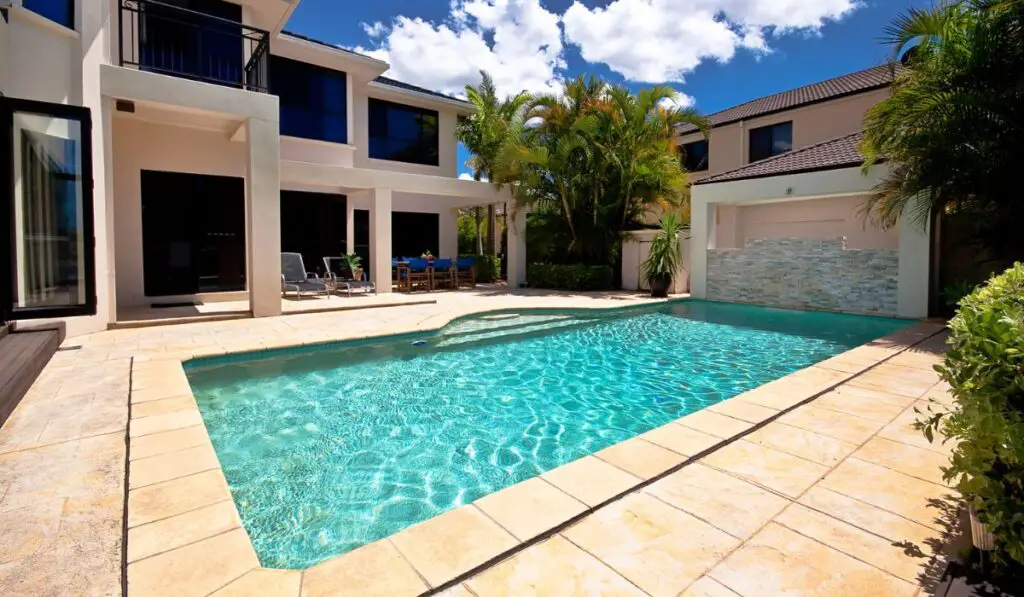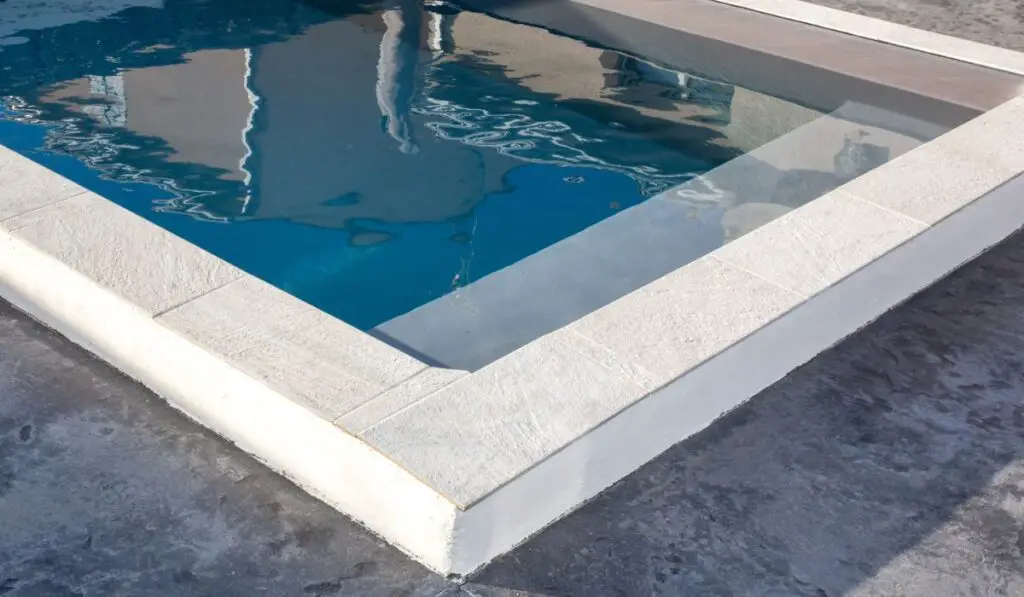Having a pool in the backyard is undoubtedly a lot of fun. But as a pool owner, it’s important to be familiar with the various pool parts and their functions, in order to ensure the safety of the pool and those swimming in it. So, what is pool coping, and why is it important to your pool?
Pool coping is the material that makes up the rim of your pool, keeping water from ending up between your pool shell and the ground around it. Proper coping can prolong the life of your pool and make it more aesthetically pleasing. Pool coping also helps keep swimmers safe.
Are you wondering what your pool coping material options are? Let’s take a closer look at the various types of pool coping as well as some information on how you can choose the right material for your pool.
What Is Pool Coping?

Pool coping is the part of the pool that blocks water from getting in between the pool shell and the ground.
It can be easier to think of pool coping as the rim of the pool. If someone is swimming in the pool and swims up to the edge to grab on, the edge they grab onto is the pool coping.
What Are the Benefits of Pool Coping?
There are several benefits to pool coping, most of which are necessary to prolong the life of an in-ground pool.
Pool Coping Protects Your Pool
Pools are filled with water, and when this water gets behind the shell of the pool, it can cause the pool to develop cracks. If your pool develops cracks, you’ll have to have the pool redone before the cracks get worse.
Additionally, pool coping directs any water that does get out of your pool away from your pool and into nearby drains. This protects your home and yard from standing water.
Pool Coping Protects Swimmers
The area around a pool tends to get wet and slippery. When pool coping is integrated to the area around a pool, it provides swimmers with a non-skid surface, lowering the chances that someone could accidentally fall into your pool.
Pool Coping Makes Your Pool Look Good
Although safety is the most important function of pool coping, your pool will also look pretty strange without it. Pool coping is somewhat decorative and can help blend the look of your pool with whatever tiles or stones you have placed around it.
What Are the Most Common Materials Used?
Pool coping can be designed out of several different materials, and the one you choose to use will depend on the look you want for your pool as well as the setup of your backyard.
Pool coping is typically made of the following materials:
- Concrete
- Paver
- Travertine
- Marble
- Brick
- Sandstone
- Flagstone
- Bluestone
How to Choose the Right Material

There are a few different steps when it comes to deciding which material is best for your pool coping.
Step 1: Consider Your Yard
Pool coping is designed to be integrated seamlessly with whatever materials appear around your pool. You will want to take a look at your yard and consider what will blend in nicely.
If your pool will be surrounded by tile, then concrete, which blends well with tile, might be a good choice. If your pool will be surrounded by flagstones, then a flagstone pool coping will likely work best.
Step 2: Look for Pool Kits
If you’re having an in-ground pool installed by a service, they may have kits available which already have the coping specified. These kits can be a great way to get an in-ground pool while on a budget.
Step 3: Consider Your Climate
Different coping materials last longer in certain climates. It’s best to discuss with a professional whether your desired coping will survive well in the climate where you live.
For more humid climates, something without grout, like cement or paver, will last longest. If you live somewhere drier, then tile or flagstone are also good options.
Step 4: Look at Cost
Putting in a pool isn’t cheap, and different coping materials cost different amounts. Take a look at the cost per square footage of each option before you make your decision. Generally, pavers and concrete are the most cost-effective pool coping materials.
Step 5: Think About Safety
The last thing you need to think about before purchasing pool coping is keeping your future swimmers safe. Depending on who will be using your pool, you may want to consider a coping material with more non-slip qualities.
Cement and paver generally have the ability to be the most non-slip since a pattern can be pressed into the cement to make it slightly rough. Tiles, marble, and flagstones, on the other hand, can all be quite slippery when wet.
What Goes Between Coping and Concrete?
The materials that go between your coping and concrete depend on the coping material you’ve chosen. In most cases, the coping is placed right on the pool edge, using a foam form to hold it into shape until it dries.
If you’ve opted for tiles or flagstone, these will be fitted individually along the side of your pool using small amounts of concrete to hold the stones in place.
Final Thoughts
Overall, if you plan to add a pool to your backyard, it isn’t a good idea to add one without considering the coping you will use. Pool coping comes in many different materials and is essential to ensuring your pool will last for years to come.
